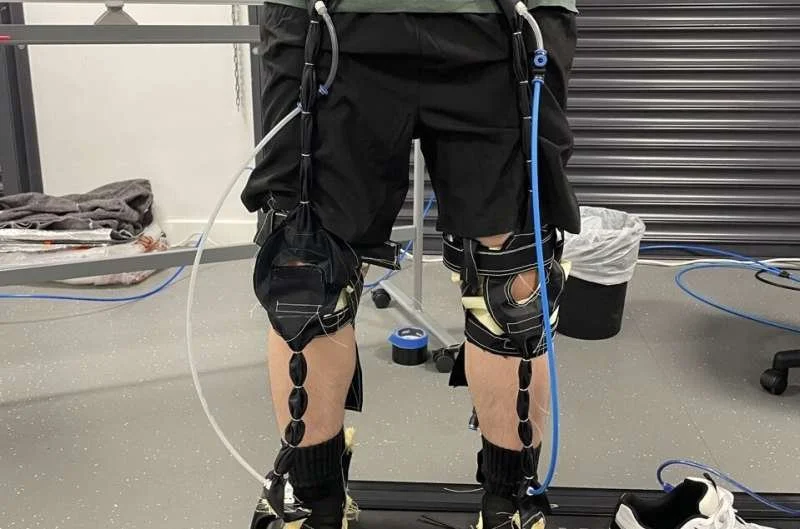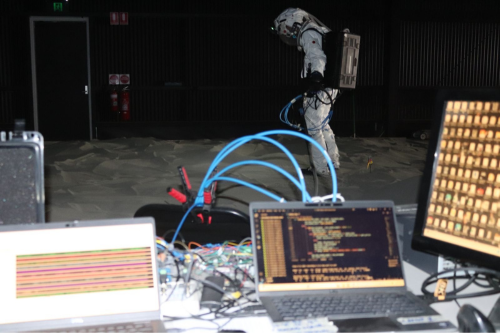Robotic “Space Trousers” Built for the Moon Could Soon Support Mobility on Earth
Astronauts may soon move more freely in low-gravity environments thanks to a new soft robotic exosuit developed by researchers at the University of Bristol — and the same technology could one day support people on Earth who need help with mobility or rehabilitation.
Unlike bulky exoskeletons, this exosuit resembles lightweight clothing. It’s made mostly from fabric and is worn underneath a traditional spacesuit. Inside the garment are artificial muscles — soft, inflatable actuators that automatically assist leg movement. By boosting the lower-limb muscles, the suit reduces fatigue while preserving natural gait and flexibility during future missions on the Moon and Mars.
The artificial muscles in the suit consist of two layers: an outer nylon layer and an inner thermoplastic layer that allows airtight inflation. The anchoring components, such as the waistband and knee straps, are made from Kevlar for high strength and tension resistance.
Image credit: Emanuele Pulvirenti
Last month, Dr. Emanuele Pulvirenti from Bristol’s Soft Robotics Lab traveled to the Exterres CRATER facility at the University of Adelaide — the largest simulated lunar terrain in the Southern Hemisphere — to put the suit through its first real-world field test. The trial was part of the ADAMA analog mission run by the Austrian Space Forum, sometimes called the “World’s Biggest Analog.” More than 200 scientists across 25 countries conducted coordinated experiments and simulations across four continents, reporting back to mission control in Austria.
This marked the first time a soft robotic exosuit has ever been integrated into, and tested within, a spacesuit. Experiments evaluated comfort, biomechanical performance, and mobility while performing lunar-like tasks such as climbing, walking on loose terrain, and carrying equipment.
The suit’s design reflects deep ingenuity: Pulvirenti hand-sewed it himself — guided by advice from his grandmother, a former tailor. The artificial muscles are made of a nylon outer layer and a thermoplastic inner layer that inflates, while critical load-bearing components such as the waistband and knee straps are made from Kevlar for durability under tension.
The exosuit was integrated into a spacesuit for the ADAMA space mission simulation in Adelaide, Australia
While the initial focus is space exploration, Pulvirenti sees broader applications. The research team has also built a resistive exosuit to help maintain muscle mass, and they now aim to develop a hybrid garment that can switch between assisting and resisting movement. Such a suit could support stroke rehabilitation, aging mobility, or workplace ergonomics.
Technology designed for astronauts may soon help people walk, recover, and move more easily right here on Earth.

